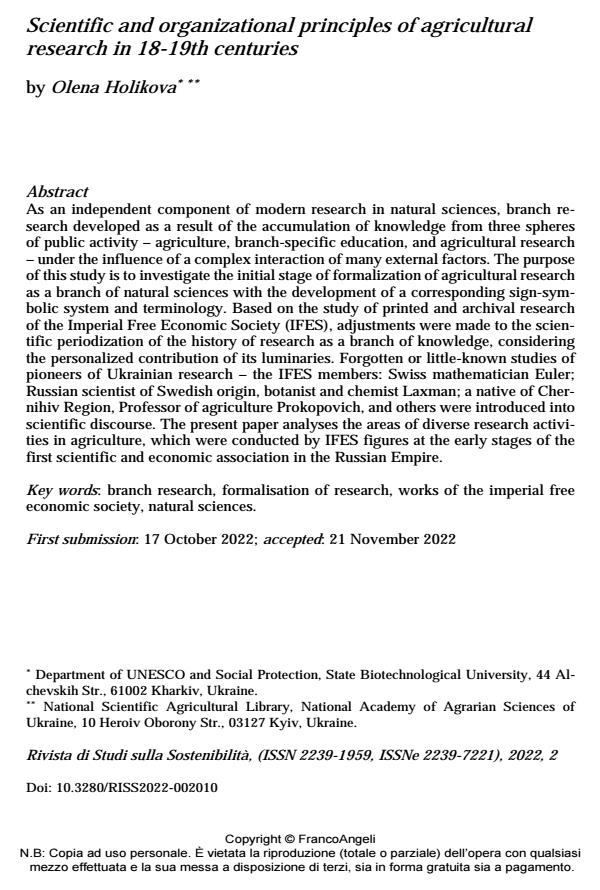Scientific and organizational principles of agricultural research in 18-19th centuries
Journal title RIVISTA DI STUDI SULLA SOSTENIBILITA'
Author/s Olena Holikova
Publishing Year 2023 Issue 2022/2
Language English Pages 22 P. 143-164 File size 122 KB
DOI 10.3280/RISS2022-002010
DOI is like a bar code for intellectual property: to have more infomation
click here
Below, you can see the article first page
If you want to buy this article in PDF format, you can do it, following the instructions to buy download credits

FrancoAngeli is member of Publishers International Linking Association, Inc (PILA), a not-for-profit association which run the CrossRef service enabling links to and from online scholarly content.
As an independent component of modern research in natural sciences, branch re-search developed as a result of the accumulation of knowledge from three spheres of public activity - agriculture, branch-specific education, and agricultural re-search - under the influence of a complex interaction of many external factors. The purpose of this study is to investigate the initial stage of formalization of agri-cultural research as a branch of natural sciences with the development of a corre-sponding sign-symbolic system and terminology. Based on the study of printed and archival research of the Imperial Free Economic Society (IFES), adjustments were made to the scientific periodization of the history of research as a branch of knowledge, considering the personalized contribution of its luminaries. Forgotten or little-known studies of pioneers of Ukrainian research - the IFES members: Swiss mathematician Euler; Russian scientist of Swedish origin, botanist and chemist Laxman; a native of Chernihiv Region, Professor of agriculture Prokopovich, and others were introduced into scientific discourse. The present paper analyses the ar-eas of diverse research activities in agriculture, which were conducted by IFES fig-ures at the early stages of the first scientific and economic association in the Rus-sian Empire.
Keywords: branch research, formalisation of research, works of the imperial free economic society, natural sciences.
Olena Holikova, Scientific and organizational principles of agricultural research in 18-19th centuries in "RIVISTA DI STUDI SULLA SOSTENIBILITA'" 2/2022, pp 143-164, DOI: 10.3280/RISS2022-002010